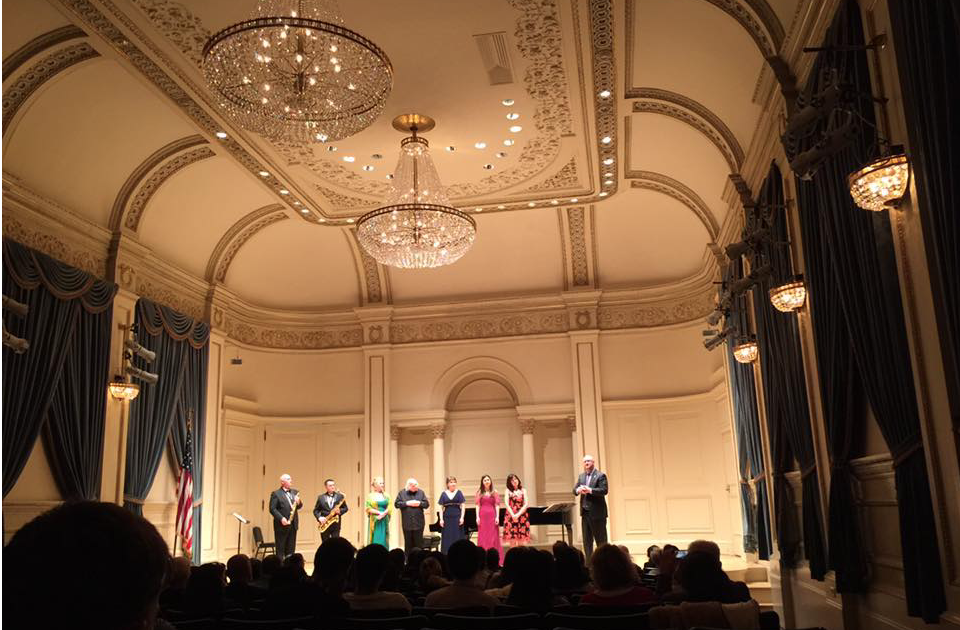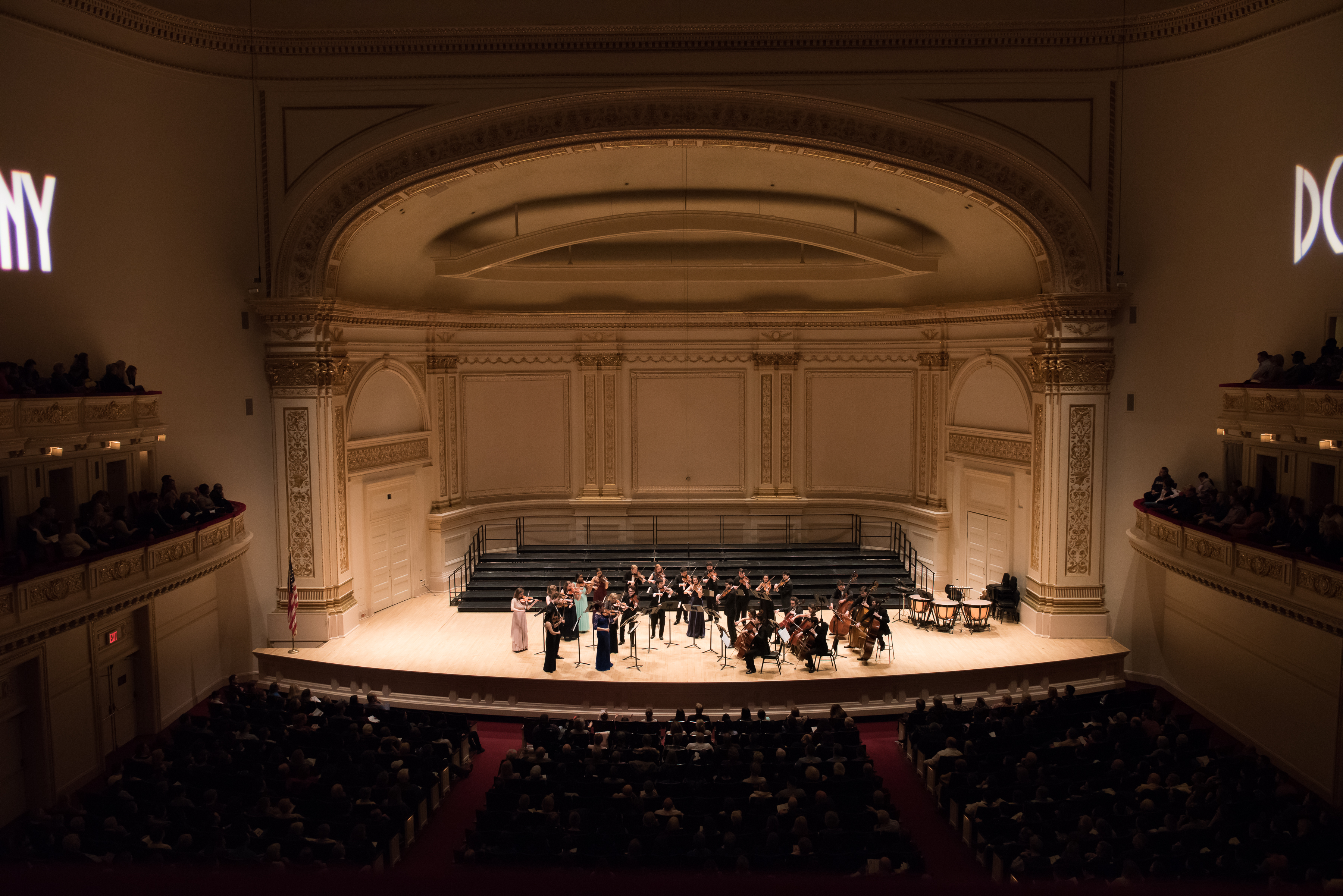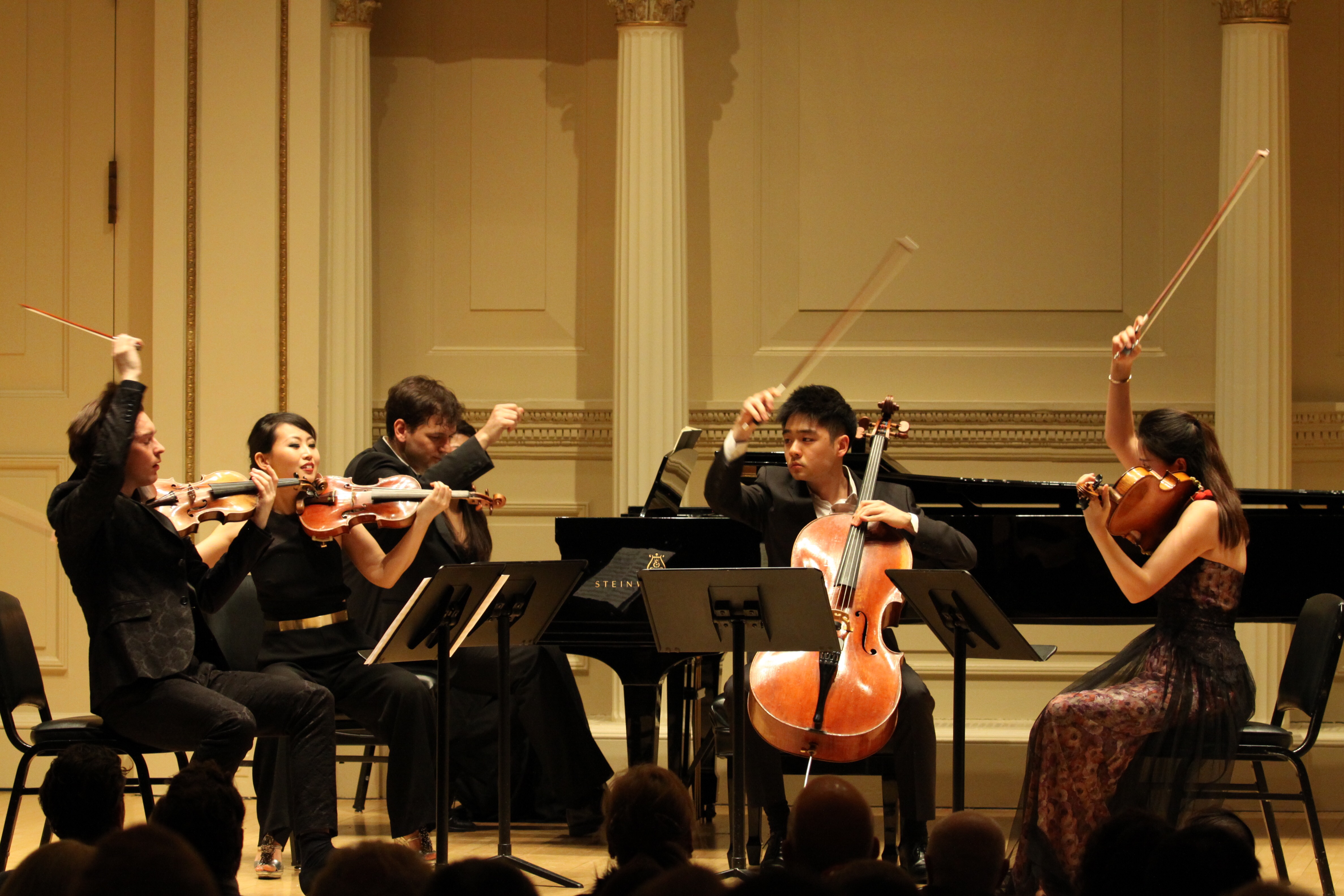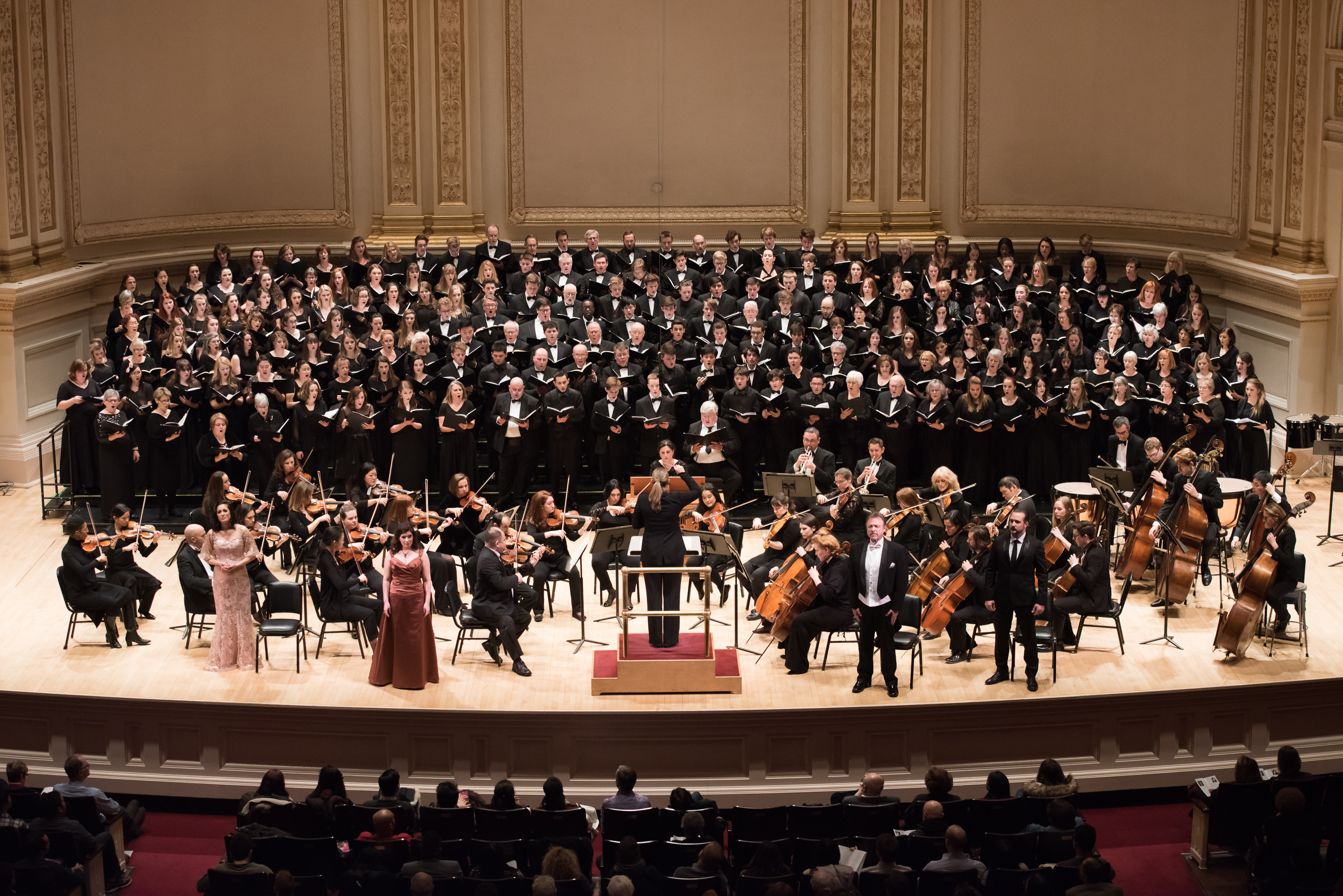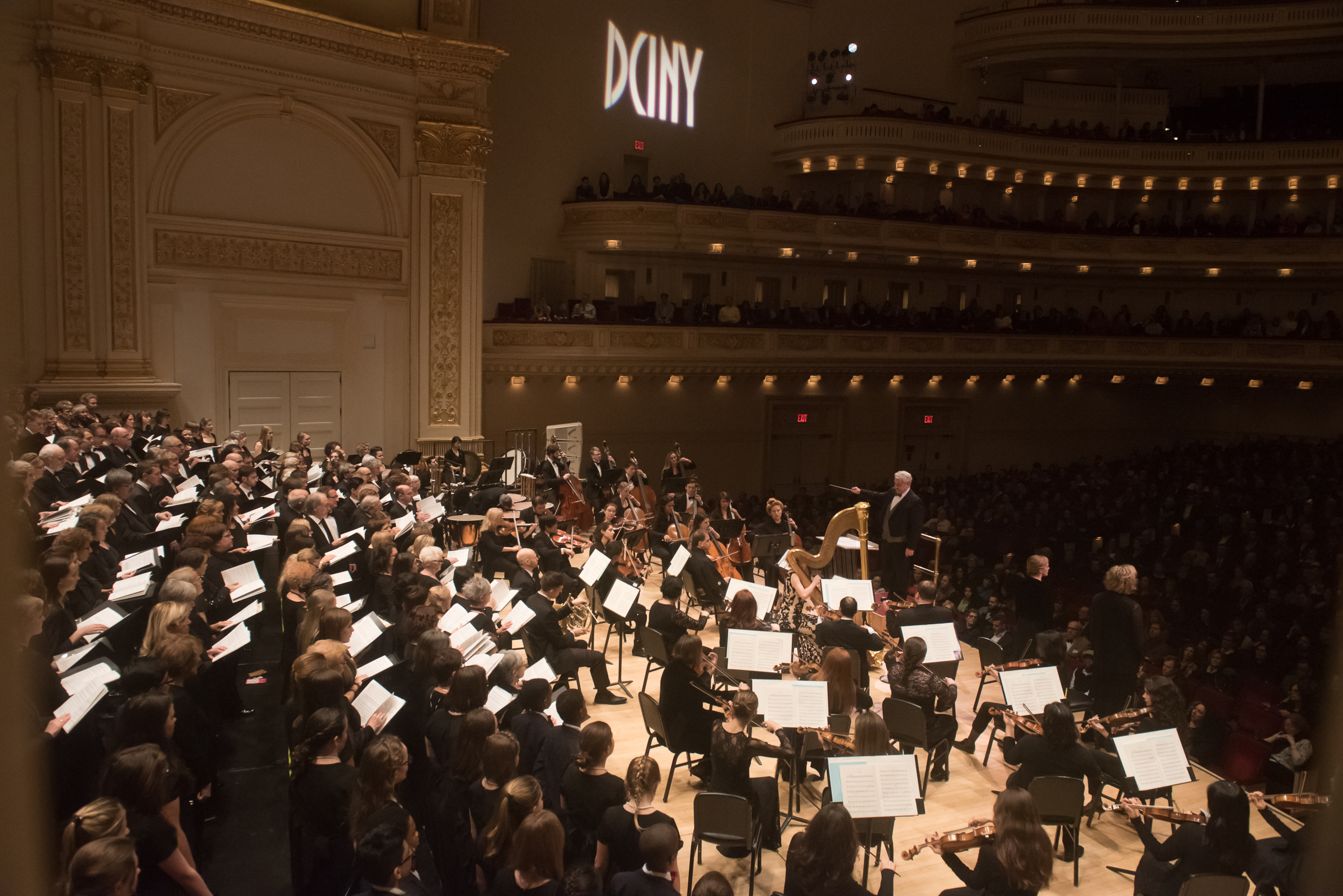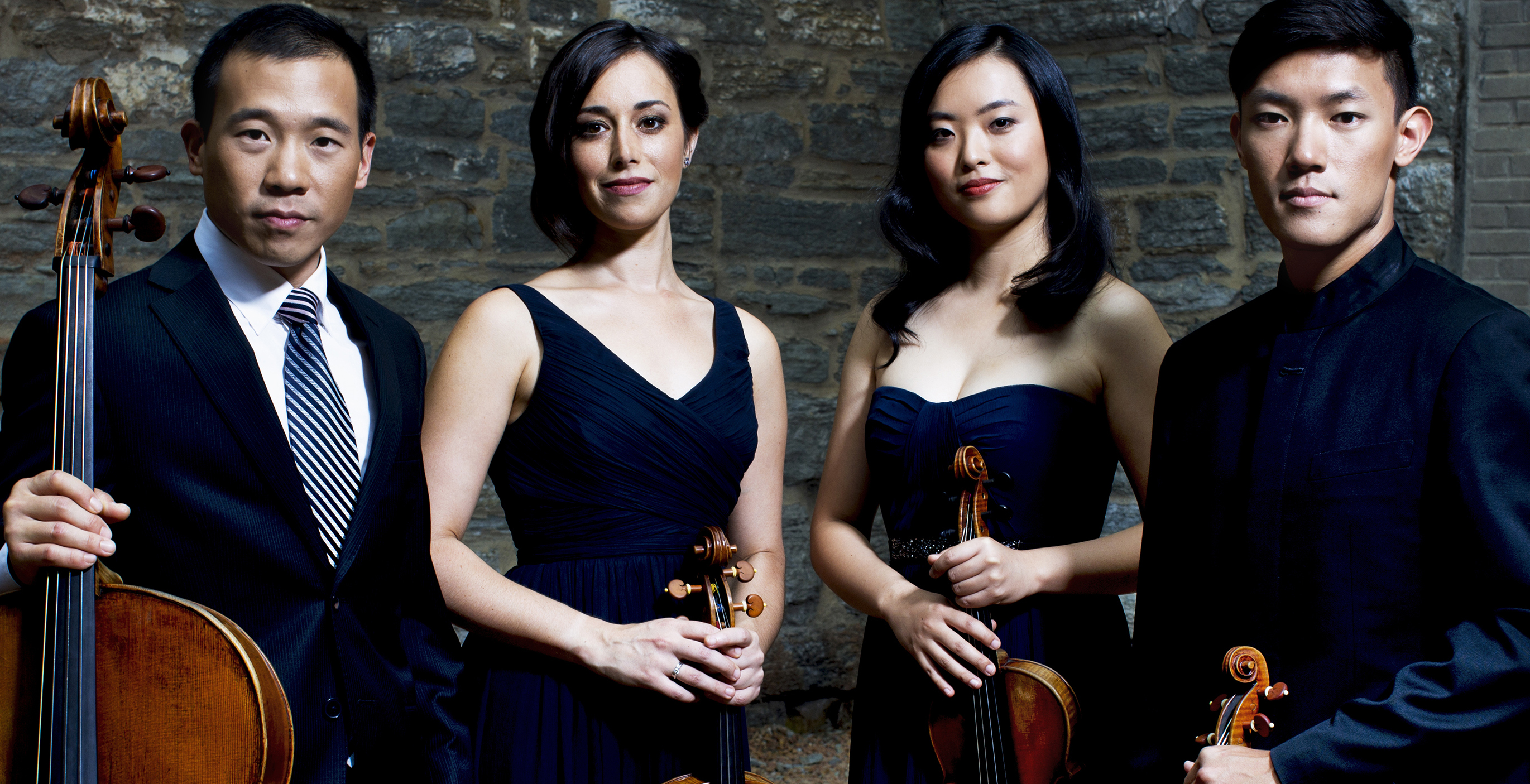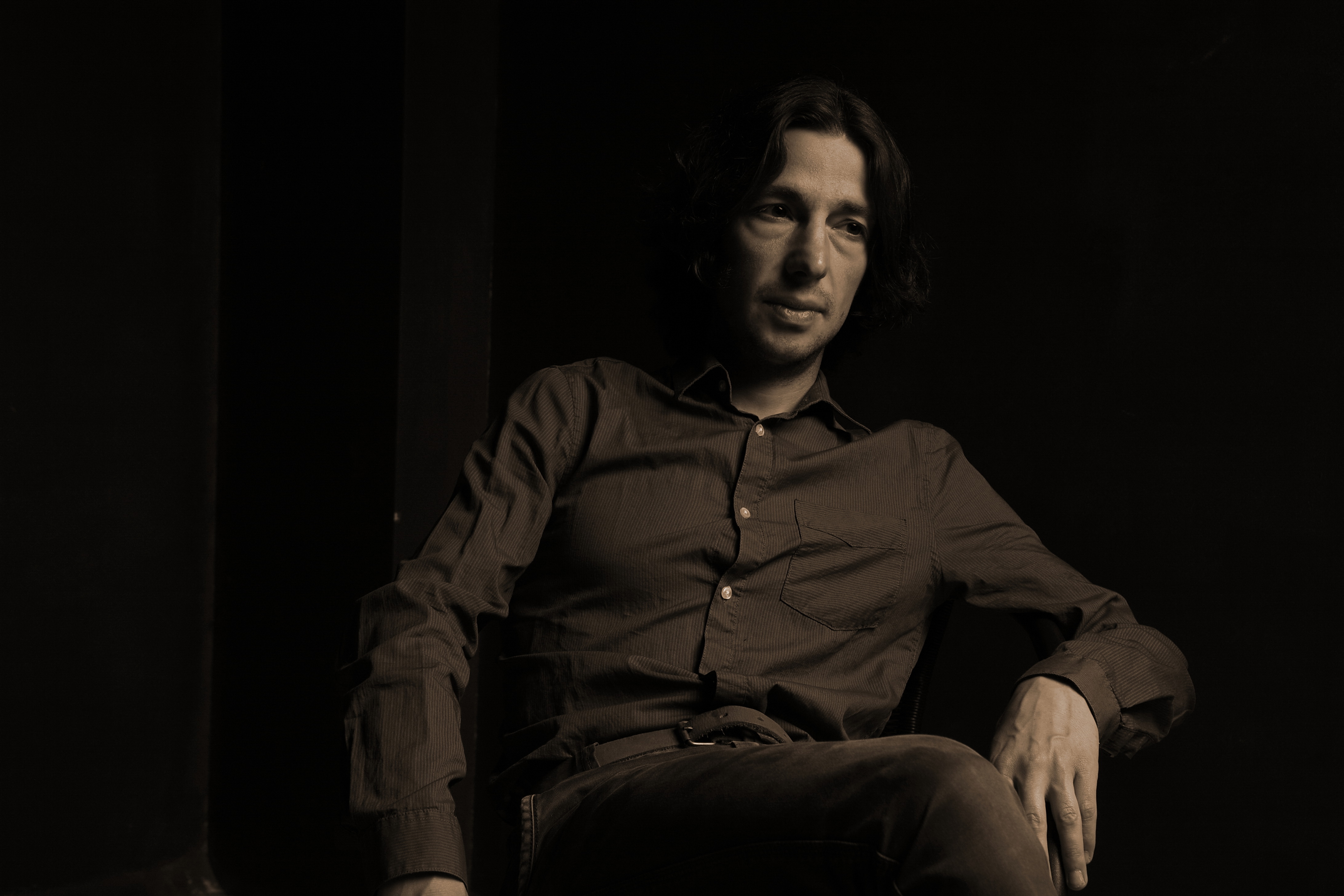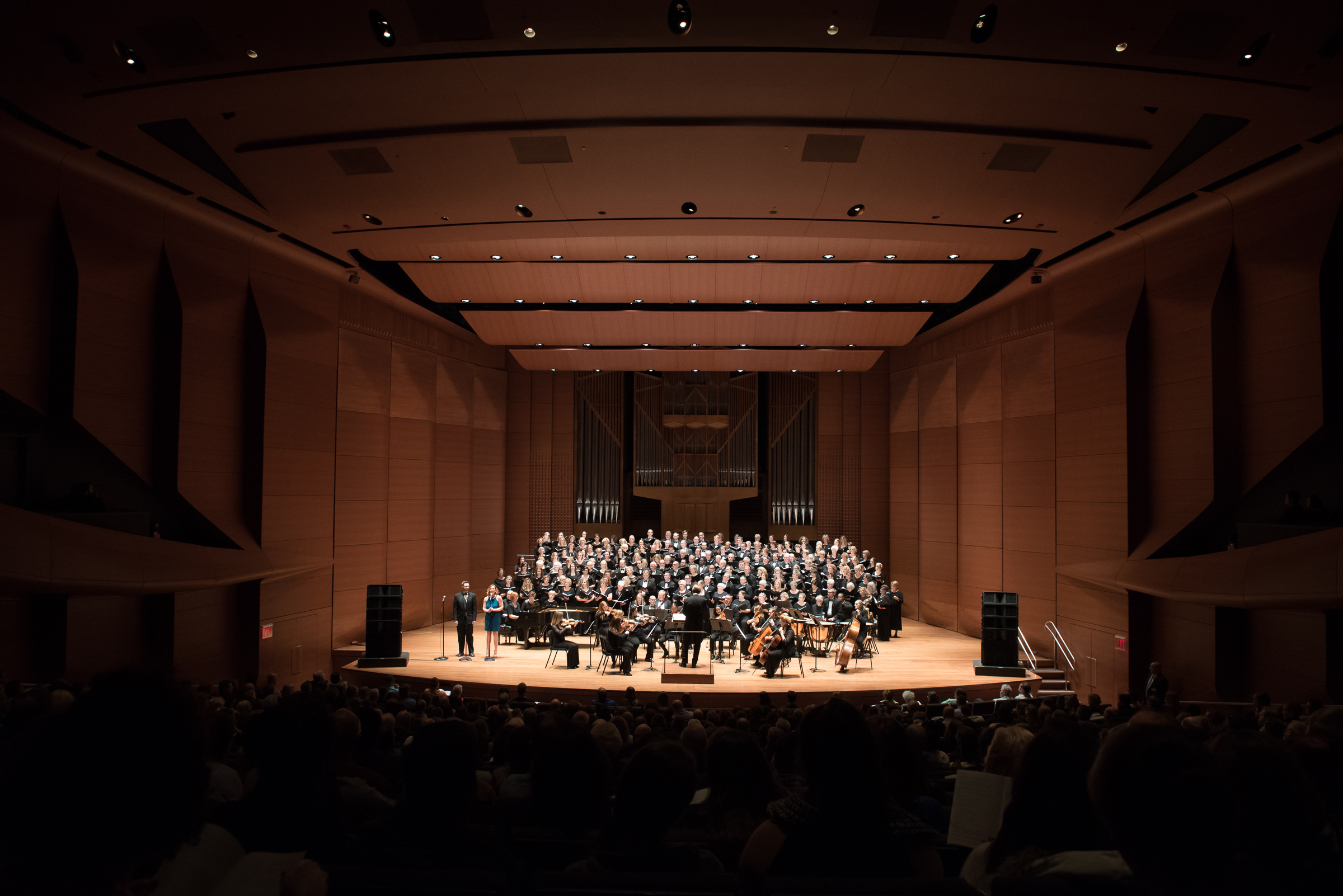Distinguished Concerts International New York (DCINY) presents The Music of Sir Karl Jenkins
Jonathan Griffith, DCINY Artist Director/Principal Conductor
Sir Karl Jenkins, DCINY Compose-in-Residence
Joanie Brittingham, soprano; Holly Sorensen, mezzo-soprano; James Nyoraku Schlefer, shakuhachi; Catrin Finch, harp; Mark Walters, baritone; Jorge Ávila, violin; David Childs, euphonium
Distinguished Concerts Orchestra
Distinguished Concerts Singers International
Stern Auditorium at Carnegie Hall, New York, NY
January 15, 2017
On what has become an annual event, Distinguished Concerts International New York (DCINY) presented a concert featuring the music of Karl Jenkins in commemoration of Martin Luther King Jr. Day. In a January 15, 2017 concert entitled simply “The Music of Sir Karl Jenkins” (as he is styled after his 2015 knighting), two works were offered, the Requiem, and the North American premiere (and only 2nd performance anywhere) of Cantata Memoria: For the Children. Both works also featured a film to go along with the music. Fans of Sir Karl had the opportunity to meet and greet him after the concert and to have the recent CD of Cantata Memoria signed.
The hall was abuzz long before the concert began, even more so than usual for a DCINY event. Friends and family in the audience shouted out to their stars and one could feel the electricity in the air. With singers from Mississippi, New Jersey, New York, Washington, Australia, Finland Germany, New Zealand, Spain, Switzerland, United Kingdom, and “individual singers around the globe,” the stage was set for a memorable night.
The concert opened with the Requiem. Dedicated to the composer’s late father, the Requiem combines elements of the traditional mass with five Japanese haiku “death” poems. The shakuhachi, an ancient wind instrument, figured prominently in the haiku sections.
Before anything else, I want to express my feelings regarding the accompanying film for this work. Usually I would expect some strong correlation to the text/music, but this was not the case. Furthermore, in some sections, the same montage recycled several times (at least three in the Dies Irae) to the point where one felt exasperated. As the film adds nothing, I would strongly suggest removing it from any future performance. The music is strong enough and meaningful enough to stand on its own without any artificial support.
Now that I have dispensed with that quibble, it is time to commend all for a wonderful performance of a moving work. Highlights for this listener were the Dies Irae (film notwithstanding), and the Lux aeterna. Special mention to harpist Catrin Finch, James Nyoraku Schlefer for his fine playing of the shakuhachi, and the lovely voices of soprano Joanie Brittingham and mezzo-soprano Holly Sorensen. The large chorus was well-prepared, with some very strong bass singers especially rising to the occasion. The audience rewarded all with the standing ovation that one usually hears at the end of a concert. It was a testament to a very successful first half.
Before the second half began, in what is also becoming a tradition, conductor Jonathan Griffith joined Karl Jenkins on stage for an impromptu conversation about the Cantata Memoria. Mr. Jenkins talked about of the history of the October 21, 1966 tragedy in Aberfan, Wales, when the collapse of a coal spoil tip killed 116 children and 28 adults. Mr. Jenkins said the memory as a Welshman was like “knowing where you were when President Kennedy was assassinated” to an American (and Maestro Griffith mentioned the Twin Towers as a reference point for younger persons). It was made clear that this tragedy is deeply entrenched in the hearts and minds of Welsh people. On a more upbeat note, Maestro Griffith mentioned that DCINY has commissioned Mr. Jenkins to write a new work commemorating the 10th anniversary of DCINY for a performance in January 2018.
Going into detail about the Aberfan tragedy is well beyond the scope of this review, but I highly recommend the well-written and comprehensive article on Wikipedia. Click the following link to access – Wikipedia- Aberfan Tragedy
Quoting the composer- “The work is in two distinct sections but performed continuously. The first deals with the tragedy and the immediate aftermath, and the second moves from darkness to light, reliving memories and celebrating childhood, ending with the Lux aeterna.” He also states that it “is not a documentary, nor even a dramatization, but it does include ideas and facts that were relevant and by now part of the legacy.”
This reviewer had seen the broadcast of the World Premiere in Wales, and also has the recording recently released by Deutsche Grammophon, so I was especially interested to see how an actual live performance would compare. It exceeded all my expectations.
The accompanying film, in this case, lent additional meaning and deepened the effect of the music, especially in the actual footage of the immediate aftermath of the tragedy. While the music certainly does not require the film, the film itself does not in any way distract or lessen the meaning or power of the music itself.
The music may not be a dramatization (as per the composer), but there are musical “suggestions” of events, i.e. the rumbling in the opening movement Pitran, patran foreshadowing the collapse of the coal spoil tip.
The names of all the victims were recited in the third movement Cortège (in a chant-like manner on a B-flat throughout), with those same names appearing on the film until the screen was literally filled with names. It was a reminder that this tragedy was not just about the numbers lost, but the very real lives snuffed out, the majority of them just beginning. Combined with the footage of the funerals, with countless tiny coffins, it was heartbreaking (and even though I knew the content and what was coming, it still had me in tears). Cortège ended with the baritone soloist Mark Walters quoting the denunciation by a victim’s father, “Buried alive by the National Coal Board.”
Lament to the Valley which followed was hauntingly beautiful. I suspect it will have many a performance independent of the entire work. DCINY concertmaster Jorge Ávila was superb as he played the lyrical sections with emotion without ever making them maudlin, and he handled the virtuosic sections with an understated flair that was perfect. The Lament was the highlight of the Cantata for this listener.
The bird-like singing of soprano Joanie Brittingham in Did I hear a bird? was delightful – the highlight of her outstanding solo work. Baritone Mark Walters was a force as well, with his powerful voice projecting well into the auditorium.
Of the remaining sections, I would like to single out And-a half as a favorite, with the child-like “one-upmanship” the theme which only could make one laugh and smile.
The final movement, Lux aeterna, is “borrowed” from the Requiem. Ending with the soprano soloist singing the word “Light,” the circle from darkness to light was closed.
Maestro Griffith led the large forces with his customary steady hand, maintaining complete control in a way that always appears to be effortless, which it is certainly not! The chorus is to be congratulated on a very polished performance which suggested a high level of preparation. This review would not be complete without the mention of harpist Catrin Finch and euphonium virtuoso David Childs, both of whom were featured in the world premiere and lent their unmatched talents to this performance.
Cantata Memoria is a work that takes the listener to the depths of despair and heartache, then lifts them back out with a message of hope and light. It was an incredibly moving experience.
Audience members sprung to their feet with a standing ovation that became a roar when Mr. Jenkins came to the stage. I am already looking forward to January 2018. Bravo to all!
by Jeffrey Williams for New York Concert Review; New York, NY


